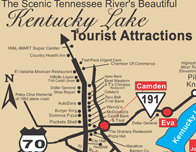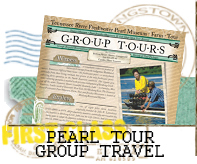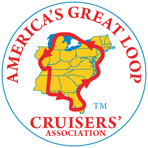Historical Civil War Battle of Johnsonville happened on the area waters of our own Kentucky Lake. Nathan Bedford Forrest opened fire on the supply depot and the town of Johnsonville November 4, 1864. One of West Tennessee’s highest points is Nathan Bedford Forrest State Park’s Pilot Knob. The “Knob” is home to a monument on the battle site and a Tennessee River Folk Life Museum.
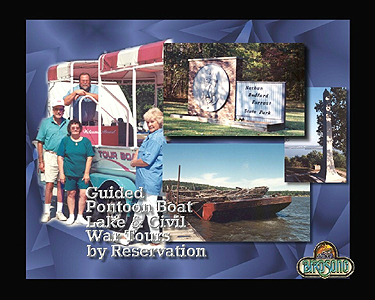
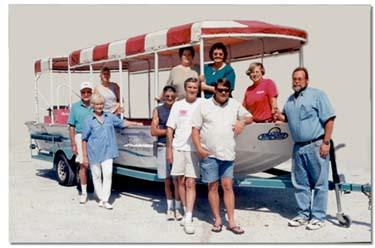
*Birdsong Resort*
*Just Upriver of the Battle of Johnsonville*
*And Site of the March to Florence*
* *
*You could call it a tale of two banks. On Nov. 4, 1864, C.S. Gen. Nathan Bedford Forrest’s cavalry shelled the Federal depot at Johnsonville on the Tennessee River’s east bank five miles northeast of this marker, turning it into a mile-long inferno. Most of its military supplies were torched, more than 30 boats burnt. *
*Damages totaled $2.2 million, which in 2007 would be worth almost $37 million. “We had all the boats in full blast burning, making the prettiest sight man ever saw on the river,” Forrest’s lieutenant, C.S. Gen. Tyree Bell, would later say.*
*On the west bank of the Tennessee River, residents of Birdsong Creek and other communities cheered the resurrection of the ‘Confederate Navy,’ as Forrest’s victorious cavalry marched south with the flag of the captured-then-sunk U.S.S. Undine. It was the first – and so far, only – time in recorded history that a cavalry defeated a navy.*
*In a change of fortunes, the evening of Nov. 5 brought mercy for the town and misery for the Confederacy. Torrential rainstorms soaked the area while Forrest’s cavalry withdrew to the south toward Florence, Ala., and the uncontrolled Tennessee River turned most of the land into soggy marshland. Bell would later say, “…The country was deluged with water. The roads were almost impassable, the worst roads on earth.”*
*The cavalry, which normally traveled more than 20 miles a day, was reduced to less than three as it slogged through the west bottoms of the Tennessee and over the mouth of Birdsong Creek (one mile east-northeast of this marker). It would take two weeks to make the 100-mile journey to Florence, just south of the Alabama state line, to meet the C.S. Army of Tennessee under Gen. John Bell Hood.*
Raise the Gunboats

In 1990 a group of local citizens decided to try to raise some of the gunboats sunk at the Battle of Johnsonville” which have been resting in the mud and pea gravel for over 136 years. The group calls itself Raise the Gunboats, Inc. and is a non-profit organization.
In 1993 several dives took place which helped to locate several underwater shipwrecks. Plans began to be put into action to raise the necessary funds to provide the resources needed to raise one of these gunboats.
Battles with the Navy took place which delayed some of the salvage work, but finally in November of 1997 a boat was raised which was thought to be the Tawah, on of the 5 sunken gunboats.
Unfortunately, it appears to have been an Army Corp of Engineers Derrick Boat #9 that was used around 1912-1919 to keep the river channel clear.
Yet, what was accomplished was the fact that RTG proved they could raise a submerged structure with the equipment they own. (Details are included on the Derrick Boat #9 recovery on this site)
Over the years many interesting stories have surfaced about the gunboats, and barges, back before TVA flooded the area to form Kentucky Lake, sometimes dry, drought conditions would cause water levels to be low. Locals would board the partially revealed vessels and would recover such items as cedar pencils and such.
One person once reported having seen a whole load of cannonballs.
Local Shell Divers over the years have recovered artillery shells, a pistol, coffee beans, etc.
CALL (731)584-7880 for more information
Battle of Johnsonville: Battle of Johnsonville to view a map from the Battle of Johnsonville dated November 4, 1864.
Battle of Johnsonville 2: Battle of Johnsonville 2 to view a map from the Tennessee River Map from the Battle of Johnsonville.



